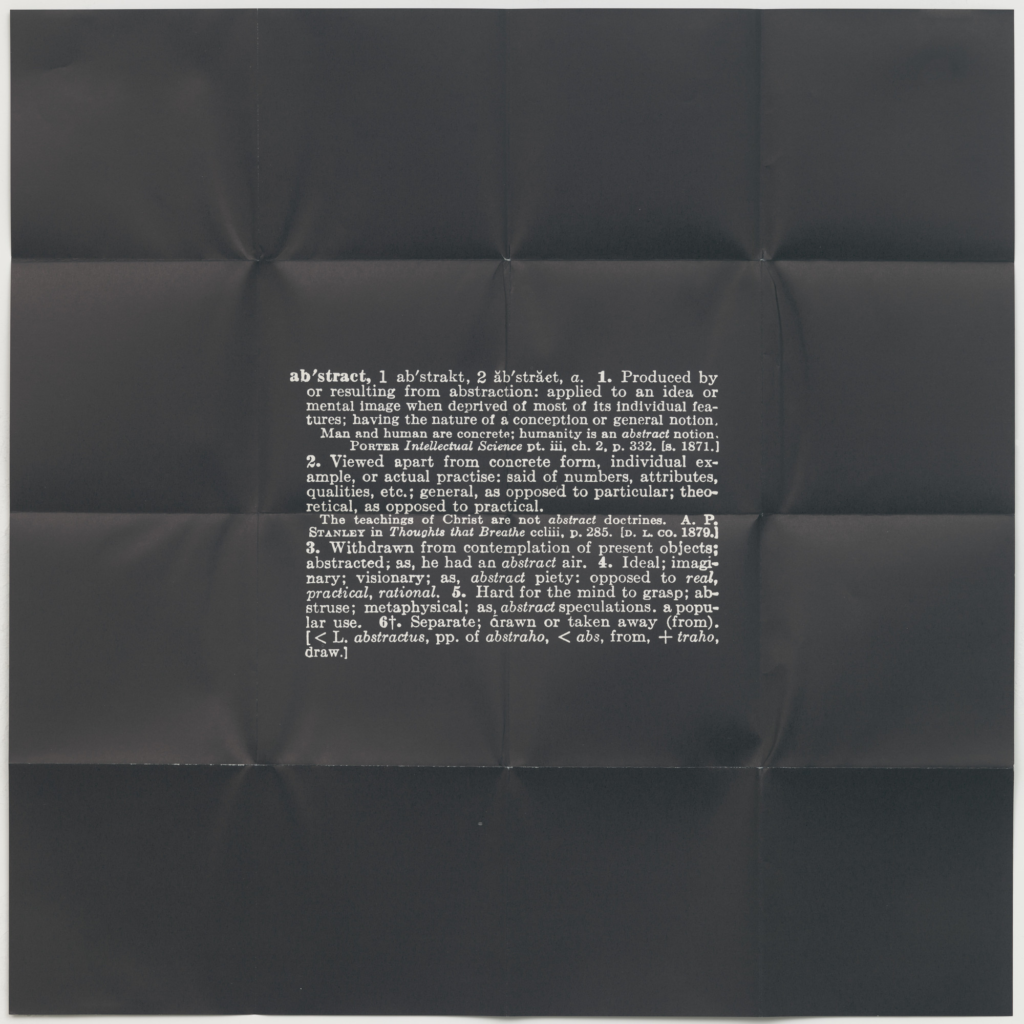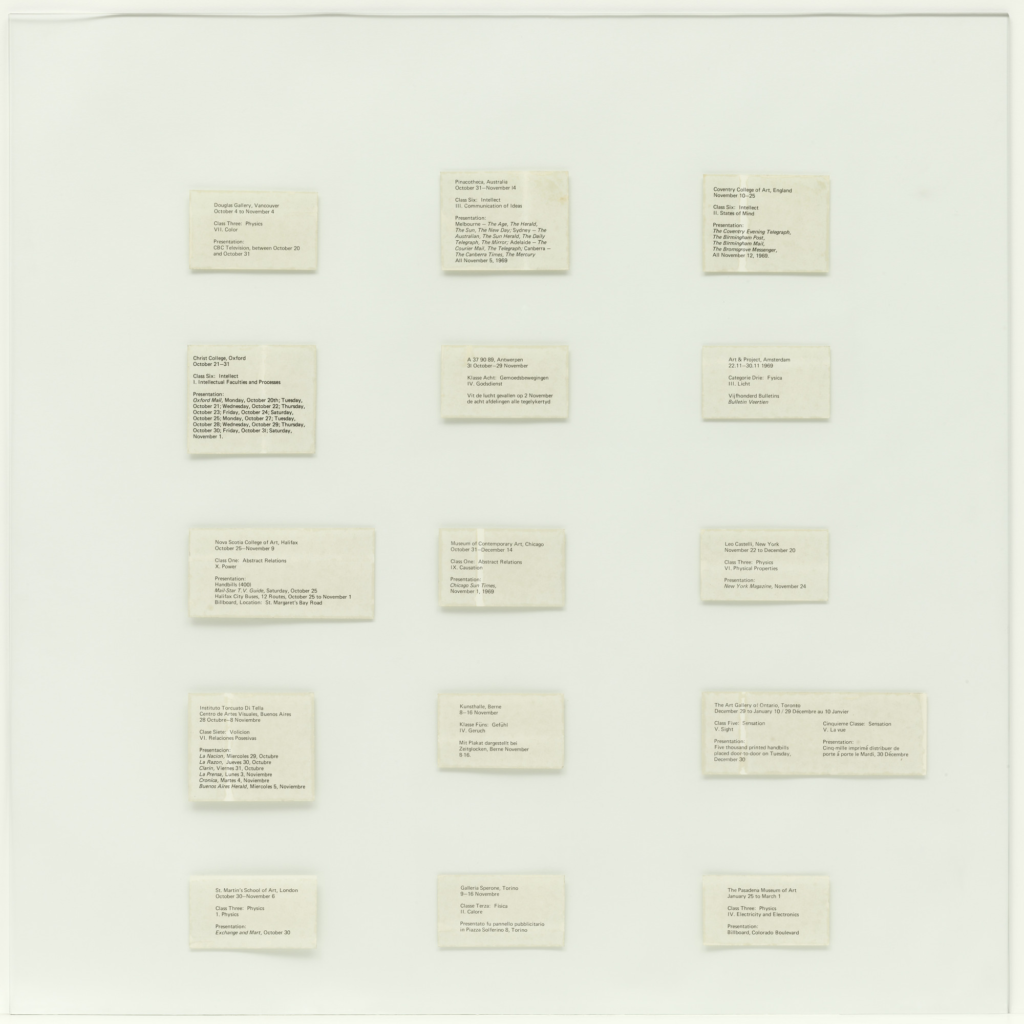Memoriesforart » Artists » Joseph Kosuth
More Facts
Name: Joseph
Surname: Kosuth
Gender: Male
Lives & Works: Toledo
Lives in State: Ohio
Nationality: United States of America
Date of Birth: 1936
Period: Post-War
Movement: Conceptual Art
Table of Contents

Joseph Kosuth, an American conceptual artist, was born on January 31, 1945, in Toledo, Ohio. He grew up in a creative and artistic environment, as his father was an artist and teacher. Kosuth’s early exposure to art played a significant role in shaping his artistic interests and career.
During his formative years, Kosuth attended the Toledo Museum School of Design, where he received formal art training—his time at the school allowed him to develop technical skills and explore various mediums. Kosuth’s education at the museum school laid the foundation for his future artistic endeavors.
After completing his studies at the Toledo Museum School of Design, Kosuth continued his education at the School of Visual Arts in New York City. This institution gave him a more experimental and avant-garde approach to art, greatly influencing his conceptual art practice.

Joseph Kosuth is known for being a leading figure in the conceptual art movement. He is recognized for his pioneering work in art theory and exploring the relationship between language and art.
Kosuth is famous for using text and language in his artwork, often presenting words and definitions as visual forms. He is also known for his installations, which usually juxtapose objects and text to challenge traditional notions of art and meaning.
Kosuth’s work has had a significant impact on the art world, influencing subsequent generations of artists and shaping the field of conceptual art.

Joseph Kosuth is a highly influential artist known for his conceptual art and exploration of language and meaning. He began his career in the late 1960s and quickly gained recognition for his groundbreaking ideas and innovative approach to art.
Kosuth’s artistic style is characterized by using text and language as the primary medium. He often incorporates dictionary definitions, quotations, and philosophical texts into his artwork, challenging the traditional notions of art and its relationship to language. His works are often presented as installations, with words and phrases displayed on walls or objects in a gallery space.
In addition to his use of language, Kosuth is also known for his interest in the viewer’s role in creating meaning. He believes that art is a dialogue between the artist and the viewer and that the viewer’s interpretation and understanding of the artwork is just as important as the artist’s intention. This emphasis on the viewer’s role in creating meaning sets Kosuth apart from other artists of his time.
Joseph Kosuth was a crucial figure in the conceptual art movement. His theory of abstract art centered around the idea that the concept or idea behind a work of art is more important than the physical object itself.
According to Kosuth, art should be about exploring and understanding ideas rather than simply creating visually appealing objects. He believed that the artist’s role was to pose philosophical questions and challenge the traditional notions of art.
Kosuth’s work often involved text and language, as he believed that words were a powerful tool for conveying meaning and sparking intellectual discourse. His contributions to conceptual art have had a lasting impact on the world, influencing subsequent generations of artists to explore what art can be.

One of his most famous works is “One and Three Chairs,” which consists of an actual chair, a photograph, and a definition of “chair.”
This work challenges traditional notions of art and forces viewers to question the nature of representation and meaning.
One and Three Chairs by Joseph Kosuth is a conceptual artwork that falls into the category of abstract art. The artwork consists of three components: a physical chair, a photograph of the chair, and a definition of the word “chair” displayed on a wall.
The idea behind One and Three Chairs is to challenge the traditional notion of art as a physical object and explore the concept of representation. The artwork raises questions about the nature of art and the relationship between language, representation, and perception.
By presenting three chair representations, Kosuth invites viewers to consider how meaning is constructed and how language shapes our understanding of the world. The physical chair represents the object itself, the photograph represents a two-dimensional representation of the chair, and the definition means the conceptual representation of the chair.
One and Three Chairs highlight the importance of context and interpretation in art. It encourages viewers to critically engage with the artwork and think about how we assign meaning to objects and symbols.
Other works include:
|
1966 |
Four Colors Four Words |
|
1965 |
Five Words in Green Neon |
|
1965 |
Clock (One and Five) |
|
1999 |
Frammento |
|
1986 |
Zero and Not |
|
1979 |
Text-Context |
|
1966 |
Subject and Object |
|
1987 |
Here is an example |
|
1990 |
The Gift |
|
2004 |
Seeing Knowing by Night |
After philosophy and after Joseph Kosuth, art has become a more complex and multifaceted concept. In the realm of post-philosophy art, there is a shift away from the traditional notions of aesthetics and the production of physical objects. Instead, art becomes more focused on ideas and concepts, challenging the boundaries of what can be considered art.
Joseph Kosuth, a prominent figure in conceptual art, emphasized the importance of language and context in art. His work often consisted of text-based installations that explored the relationship between words and objects. This approach has significantly impacted the art world, leading to a greater emphasis on the conceptual aspects of art.
In the post-philosophy era, art was no longer confined to the traditional mediums of painting and sculpture. Artists now work with various materials and techniques, including performance art, video installations, and digital art. The focus is on exploring new ideas.
Furthermore, post-philosophy art challenges the notion of the artist as an individual genius. Collaborative and participatory art projects have become more prevalent, blurring the lines between artist and audience. Art becomes a shared experience, inviting the viewer to engage with the work actively.
Instagram: https://www.instagram.com/josephkosuthstudio/?hl=en
Twitter: https://twitter.com/jkosuthstudio?lang=en